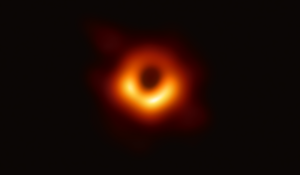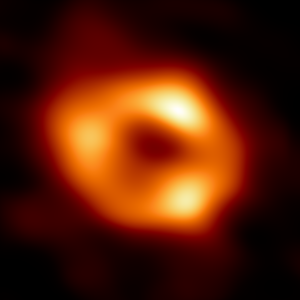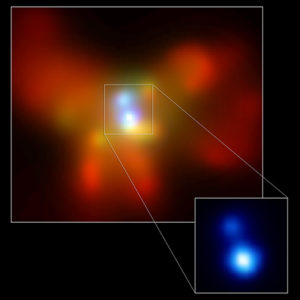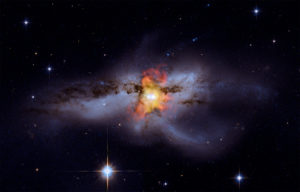The first image of a supermassive black hole was obtained back in 2019 by the Event Horizon Telescope (ETH) Collaboration. The supermassive black hole, called M87*, is located at the center of a distant galaxy Messier 87. It is about 53 million light-years away from Earth.
There was a press release on Thursday 5/12/2022 that the ETH obtained the first image of the supermassive black hole (Sagittarius A*) at the center of our own Milky Way galaxy.
Sagittarius A* (Sgr A* in short) is a bright and compact astronomical radio source at the center of Milky Way galaxy. It has long been suspected that Sgr A* is a supermassive black hole after scientists have determined its mass using stars orbiting around Sgr A*. It is 4 million times heavier than our Sun (the solar mass is about $2\times 10^{30}$ kg). The above image is an overwhelming visual evidence that Sgr A* is indeed a black hole. A black hole is really black. Its gravity is so strong that even light cannot escape from it. Because of that we cannot see a black hole with our naked eyes. The material (gases) forms an accretion disk just outside of a black hole’s event horizon and it is hot enough that it emits X-rays. By detecting this X-ray emission, we can indirectly see a black hole. The above picture shows a dark central region (event horizon) surrounded by a bright ring. This is really an amazing scene. The bright ring-like structure is something called a photon sphere. It is light being bent by powerful gravity of the supermassive black hole as predicted by Einstein’s general relativity. Although Sgr A* is much closer to Earth (about 27,000 light-years away from Earth) than M87*, getting an image of Sgr A* is much more difficult. The gas around both M87* and Sgr A* are orbiting nearly as fast as light. But while the gas around M87* takes days to weeks to complete an orbit, it takes just minutes for the gas around Sgr A* to complete an orbit. This means the brightness and pattern of the gas around Sgr A* is changing considerably more rapidly than those of the gas around M87*. The following video clip is quite informative and has an easy to understand account on how the image of the supermassive black hole was obtained by the ETH.
Intriguingly, a galaxy can have more than one supermassive black hole. This is because galaxies undergo collisions and mergers with other galaxies. Back in 2002, two merging supermassive black holes in the galaxy NGC 6240 were discovered from Chandra X-ray data.
The following image contains new X-ray data from Chandra (shown in red, orange, and yellow) that has been combined with an optical image from the Hubble Space Telescope originally released in 2008.
The two black holes are mere 3,000 light years apart from each other and scientists think that the merger began about 30 million years ago and will conclude some tens or hundreds of millions of years in the future.




